Regulatory role of human AP-endonuclease (APE1/Ref-1) in YB-1-mediated activation of the multidrug resistance gene MDR1
- PMID: 18809583
- PMCID: PMC2593380
- DOI: 10.1128/MCB.00244-08
Regulatory role of human AP-endonuclease (APE1/Ref-1) in YB-1-mediated activation of the multidrug resistance gene MDR1
Abstract
Human AP-endonuclease (APE1/Ref-1), a central enzyme involved in the repair of oxidative base damage and DNA strand breaks, has a second activity as a transcriptional regulator that binds to several trans-acting factors. APE1 overexpression is often observed in tumor cells and confers resistance to various anticancer drugs; its downregulation sensitizes tumor cells to such agents. Because the involvement of APE1 in repairing the DNA damage induced by many of these drugs is unlikely, drug resistance may be linked to APE1's transcriptional regulatory function. Here, we show that APE1, preferably in the acetylated form, stably interacts with Y-box-binding protein 1 (YB-1) and enhances its binding to the Y-box element, leading to the activation of the multidrug resistance gene MDR1. The enhanced MDR1 level due to the ectopic expression of wild-type APE1 but not of its nonacetylable mutant underscores the importance of APE1's acetylation in its coactivator function. APE1 downregulation sensitizes MDR1-overexpressing tumor cells to cisplatin or doxorubicin, showing APE1's critical role in YB-1-mediated gene expression and, thus, drug resistance in tumor cells. A systematic increase in both APE1 and MDR1 expression was observed in non-small-cell lung cancer tissue samples. Thus, our study has established the novel role of the acetylation-mediated transcriptional regulatory function of APE1, making it a potential target for the drug sensitization of tumor cells.
Figures
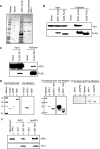
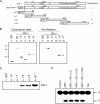

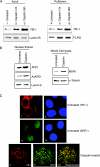

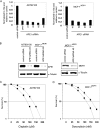
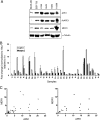
Similar articles
-
Human AP endonuclease (APE1/Ref-1) and its acetylation regulate YB-1-p300 recruitment and RNA polymerase II loading in the drug-induced activation of multidrug resistance gene MDR1.Oncogene. 2011 Jan 27;30(4):482-93. doi: 10.1038/onc.2010.435. Epub 2010 Sep 20. Oncogene. 2011. PMID: 20856196 Free PMC article.
-
Transcriptional regulatory functions of mammalian AP-endonuclease (APE1/Ref-1), an essential multifunctional protein.Antioxid Redox Signal. 2009 Mar;11(3):621-38. doi: 10.1089/ars.2008.2198. Antioxid Redox Signal. 2009. PMID: 18715144 Free PMC article. Review.
-
Functional analysis of the involvement of apurinic/apyrimidinic endonuclease 1 in the resistance to melphalan in multiple myeloma.BMC Cancer. 2014 Jan 8;14:11. doi: 10.1186/1471-2407-14-11. BMC Cancer. 2014. PMID: 24400589 Free PMC article.
-
Role of acetylated human AP-endonuclease (APE1/Ref-1) in regulation of the parathyroid hormone gene.EMBO J. 2003 Dec 1;22(23):6299-309. doi: 10.1093/emboj/cdg595. EMBO J. 2003. PMID: 14633989 Free PMC article.
-
The DNA base excision repair protein Ape1/Ref-1 as a therapeutic and chemopreventive target.Mol Aspects Med. 2007 Jun-Aug;28(3-4):375-95. doi: 10.1016/j.mam.2007.04.005. Epub 2007 May 3. Mol Aspects Med. 2007. PMID: 17560642 Review.
Cited by
-
Ape1/Ref-1 Stimulates GDNF/GFRalpha1-mediated Downstream Signaling and Neuroblastoma Proliferation.Korean J Physiol Pharmacol. 2009 Oct;13(5):349-56. doi: 10.4196/kjpp.2009.13.5.349. Epub 2009 Oct 31. Korean J Physiol Pharmacol. 2009. PMID: 19915696 Free PMC article.
-
Elevated level of acetylation of APE1 in tumor cells modulates DNA damage repair.Oncotarget. 2016 Nov 15;7(46):75197-75209. doi: 10.18632/oncotarget.12113. Oncotarget. 2016. PMID: 27655688 Free PMC article.
-
Oxidized base damage and single-strand break repair in mammalian genomes: role of disordered regions and posttranslational modifications in early enzymes.Prog Mol Biol Transl Sci. 2012;110:123-53. doi: 10.1016/B978-0-12-387665-2.00006-7. Prog Mol Biol Transl Sci. 2012. PMID: 22749145 Free PMC article. Review.
-
Targeting USP47 overcomes tyrosine kinase inhibitor resistance and eradicates leukemia stem/progenitor cells in chronic myelogenous leukemia.Nat Commun. 2021 Jan 4;12(1):51. doi: 10.1038/s41467-020-20259-0. Nat Commun. 2021. PMID: 33397955 Free PMC article.
-
LncRNA LY6E-DT and its encoded metastatic-related protein play oncogenic roles via different pathways and promote breast cancer progression.Cell Death Differ. 2024 Feb;31(2):188-202. doi: 10.1038/s41418-023-01247-5. Epub 2023 Dec 19. Cell Death Differ. 2024. PMID: 38114778 Free PMC article.
References
-
- Bargou, R. C., K. Jurchott, C. Wagener, S. Bergmann, S. Metzner, K. Bommert, M. Y. Mapara, K. J. Winzer, M. Dietel, B. Dorken, and H. D. Royer. 1997. Nuclear localization and increased levels of transcription factor YB-1 in primary human breast cancers are associated with intrinsic MDR1 gene expression. Nat. Med. 3447-450. - PubMed
-
- Bobola, M. S., L. S. Finn, R. G. Ellenbogen, J. R. Geyer, M. S. Berger, J. M. Braga, E. H. Meade, M. E. Gross, and J. R. Silber. 2005. Apurinic/apyrimidinic endonuclease activity is associated with response to radiation and chemotherapy in medulloblastoma and primitive neuroectodermal tumors. Clin. Cancer Res. 117405-7414. - PubMed
Publication types
MeSH terms
Substances
Grants and funding
LinkOut - more resources
Full Text Sources
Molecular Biology Databases
Research Materials
Miscellaneous
